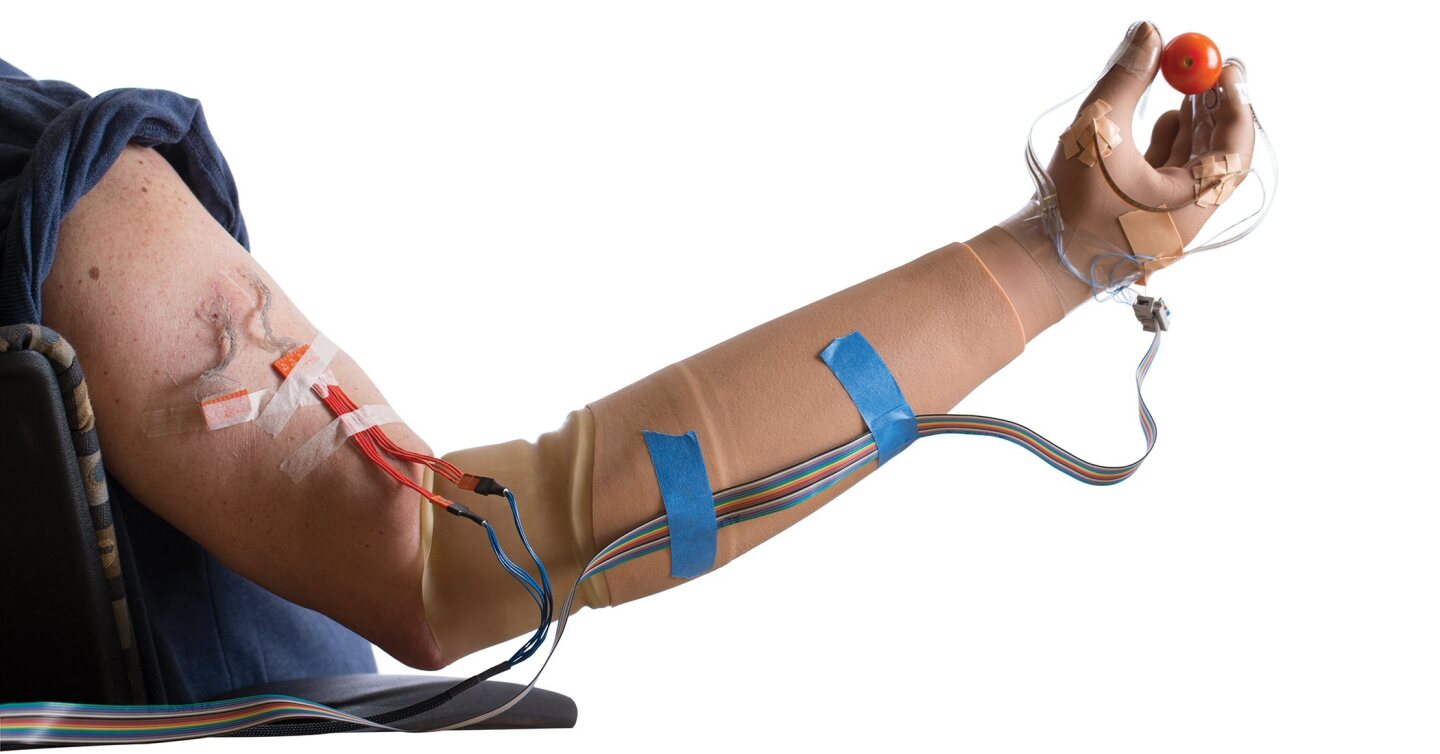A new prosthetic system allows amputees to feel familiar sensations and also, somewhat unexpectedly, reduces their phantom pain. Researchers at Case Western Reserve University and the Louis Stokes Cleveland Veterans Affairs Medical Center developed the system to reactivate areas of the brain that produce the sense of touch, but recipients of prosthetic hands reported their phantom pain subsiding almost completely after being hooked up to the system.
The researchers implanted three electrode cuffs in the arm of one test subject, Igor Spetic, in May 2012, with the cuffs encircling the median, radial, and ulnar nerve bundles in his mid-forearm for a total of 19 distinct stimulation points. Another man, Keith Vonderhuevel, had cuffs implanted on his median and radial nerves in his mid-upper arm in January 2013, for a total of 16 stimulation points. Both men lost their right hand in industrial accidents (Spetic in 2010, Vonderhuevel in 2004).
To make the sensations feel more natural, the researchers developed algorithms that convert sensor input into electrical signals of varying pattern and intensity. These algorithms have been gradually fine-tuned to the point where the men could not only do things like hold grapes or cherries in their prosthetic hand, but also distinguish between different surface types while blindfolded. Spetic could even discern two different textures touching different points on his prosthetic hand at the same time.
"I don't presume the stimuli we're giving is hitting the spots on the [mental] map [of sensations developed over a lifetime] exactly, but they're familiar enough that the brain identifies what it is," said research director Dustin Tyler.

When sensation was turned off, both men reported that the prosthesis felt like a tool extending beyond their (phantom) hand, while when it was on they could perceive their hand and the prosthetic hand as nearly perfectly co-located in space.
This perhaps had something to do with the men's phantom pain subsiding. When sensory stimulation began, Spetic reported, it felt like his phantom hand – previously described as feeling like a closed fist being squeezed in a vice – was opening again, and over repeated sessions the pain diminished and eventually disappeared.
It was a welcome side effect to the research, which Tyler describes as being not just about restoring function but also "to build a reconnection to the world." He also explained that it is a "long-lasting, chronic restoration of sensation over multiple points across the hand."
Tyler is optimistic that his team can adapt the technology for use at home within five years, and also that it could help prosthetic leg recipients adjust to gravel or uneven surfaces. It may also have implications in deep brain stimulation and controlling tremors.
This is not the first time that scientists have used prosthetics to return a sense of touch. Earlier this year a man in Switzerland had a prosthetic hand surgically wired to nerves in his upper arm. A DARPA program aims to provide lifelike prosthetic limbs with sensory feedback detailed enough that they feel like part of the wearer's body.
A paper describing the research has been published in the journal Science Translational Medicine.
Check out the video below to hear Spetic and Tyler's thoughts on the technology, and to see the prosthetic hand in action.
Source: Case Western Reserve University








